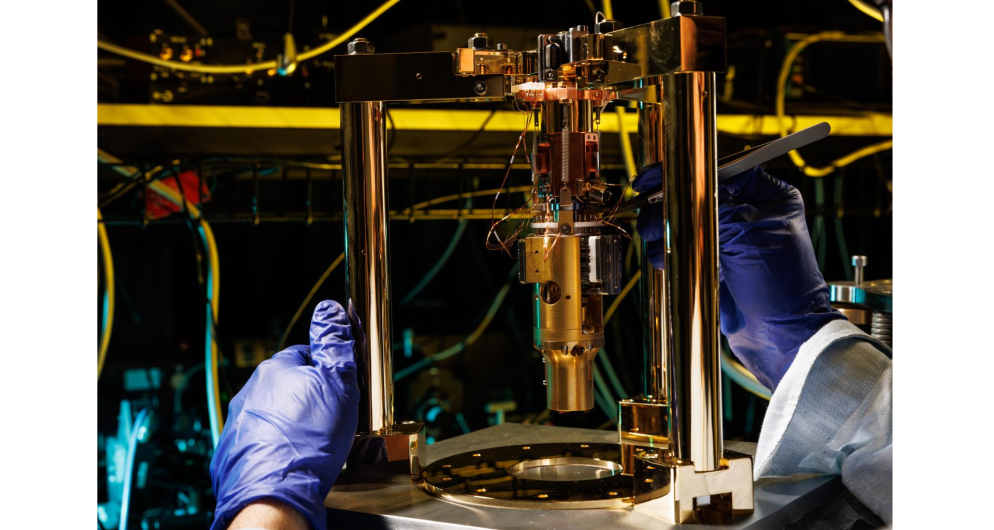Single quantum systems in semiconductors
 Tunneling Microscope adapted for the study of individual spins as part of the OneSPIN project
Tunneling Microscope adapted for the study of individual spins as part of the OneSPIN project
Being able to isolate a single atom, a single molecule, or any other microscopic object is a recent experimental feat that has enabled the rise of what many call the “second quantum revolution.” While the first quantum physics revolution, which developed in the 20th century, led to a giant leap forward in our understanding of phenomena, particularly in materials, experiments were long limited to the study of groups of particles. “Purely quantum effects, such as superposition of states, were ‘averaged out’,” points out Fabian Cadiz, a researcher at the PMC. Studying single systems makes it possible to preserve these properties of “quantum coherence.”
Very thin semiconductors
With the OneSPIN project, launched in January 2024, Fabian Cadiz and his team are investigating new materials: semiconductors only a few atomic layers thick, based on materials called “transition metal dichalcogenides.” One example is tungsten disulfide (WS2). The electrons in these materials have spin, an intrinsic property of all electrons that can be roughly represented as a compass needle.
In these semiconductors, an electron can become trapped in a “defect” in the material (e.g., the absence of an atom at a certain location). These defects are created by heating the material to a very high temperature (around 700°C). The spin of this electron then becomes an individual quantum system that scientists are seeking to control. “We can even talk about ‘artificial atoms’ because this system has discrete energy states like an electron in an atom,” explains Fabian Cadiz.
The quantum states in which these spins can be found are sensitive to disturbances that cause these quantum properties to disappear after a certain period of time known as the “decoherence time.” Theoretical predictions suggest a time greater than 10 microseconds in WS2, which would be exceptionally long. They could be exploited for applications in metrology, i.e., very precise measurements of certain properties such as magnetic fields.
Investigating electron behavior
In practice, this remains to be demonstrated, and we must first understand these new quantum systems from a fundamental perspective. What exactly are these defects? How can we verify their quantum properties? The OneSPIN project aims to answer these questions.
To detect the spins, researchers illuminate the material with a laser beam. Although small, the illuminated area contains a very large number of electrons. But the unique spins re-emit light at a specific wavelength that allows them to be distinguished. The first experiment consists of proving that these spins do indeed emit single photons, i.e., one photon at a time, which is one of the characteristics of their quantum nature. “The results are promising,” says Fabian Cadiz.
He and his colleagues are now preparing for the second stage. Using a scanning tunneling microscope, they will be able to map the surface of the material precisely in order to investigate the nature of these spins. The experiment is expected to begin by the end of the year.
OneSPIN is a project funded by the European Research Council (ERC Starting Grant 2022).
*PMC: a joint research unit CNRS, École Polytechnique, Institut Polytechnique de Paris, 91120 Palaiseau, France
 Support l'X
Support l'X